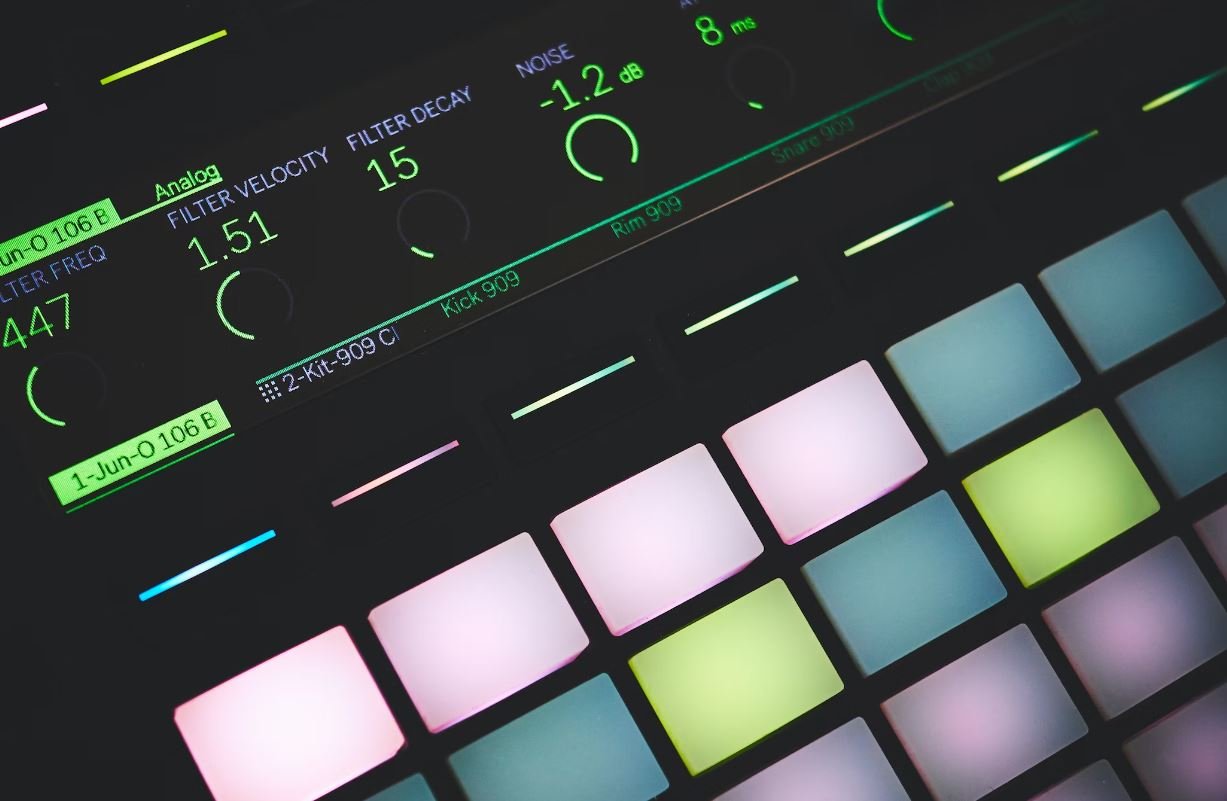What Music Is This?
Music is an integral part of human culture, but with so many different genres and categories, it’s easy to get lost in the vast sea of musical styles. From classical symphonies to modern electronic beats, music has the power to evoke emotions and transcend language barriers. This article aims to provide a basic understanding of different music genres and help you identify what music you’re listening to.
Key Takeaways
- Understanding music genres can enhance your appreciation of different styles of music.
- Recognizing key features such as instrumentation, rhythm, and vocal style can help you identify a specific genre.
- Music is a reflection of culture and society, evolving over time and influencing each other.
- Exploring and listening to diverse genres can broaden your musical horizons and inspire new preferences.
Genre Features and Identification
Each music genre has its own unique characteristics that define its sound and style. Key features to consider when identifying a genre include instrumentation, rhythm, vocal style, and lyrical themes. These elements often work together to create a distinct musical identity. For example, classical music is characterized by orchestras, complex compositions, and no lyrics, while hip-hop is known for its use of sampling, beats, and rhythmic rhymes. *Jazz, a genre that emerged in the early 20th century, combines elements of European and African music, creating a unique blend of improvisation and syncopation.*
Common Music Genres
There is no definitive list of music genres, as new styles of music continuously emerge and evolve. However, here is a brief overview of some common genres:
- Pop: Popular music characterized by catchy melodies, simple structures, and often focuses on themes of love and relationships.
- Rock: A genre that originated in the 1950s, typically featuring electric guitars, drums, and strong rhythms.
- Jazz: Known for its improvisation, syncopated rhythms, and unique harmony, jazz emerged in African American communities in the early 20th century.
- Hip-hop: A genre that originated in the 1970s in African American and Latino communities, characterized by rhythmic rhymes, beats, and sampling.
- Electronic: Music created using electronic instruments and technology, often characterized by repetitive beats and synthesized sounds.
- Country: Originating from the Southern United States, country music often features acoustic guitars, storytelling lyrics, and themes of rural life.
| Genre | Origin | Main Instruments |
|---|---|---|
| Pop | United States | Vocals, synthesizers, drums |
| Rock | United States | Electric guitars, drums, bass |
| Jazz | United States | Piano, saxophone, trumpet |
Evolution of Music
Music is constantly evolving and influenced by various factors such as cultural shifts, technological advancements, and social movements. Genres often blend and borrow elements from each other, resulting in hybrid styles. For instance, *the emergence of Latin pop in the late 20th century brought together Latin American musical traditions with contemporary pop elements.* While some genres may decline in popularity over time, others continue to thrive and adapt, reflecting the ever-changing tastes and preferences of audiences.
| Genre | Decade of Peak Popularity |
|---|---|
| Disco | 1970s |
| Grunge | 1990s |
| Trap | 2010s |
Exploring New Genres
As a music enthusiast, it’s exciting to discover new genres and expand your musical palette. Here are some ways to explore music:
- Listen to online radio stations or curated playlists that feature different genres.
- Attend concerts or music festivals that showcase a variety of artists and genres.
- Join music forums or online communities to engage in discussions and recommendations.
- Follow music blogs or podcasts that introduce new and emerging genres.
Understanding Music
Learning about different music genres provides you with a deeper understanding and appreciation of the art form. By recognizing the key features and characteristics of various genres, you can better identify and enjoy the music you listen to. So, the next time you find yourself wondering, “What music is this?” remember to consider the instrumentation, rhythm, vocal style, and lyrical themes to unlock the answer.

Common Misconceptions
Misconception #1: All genres of music can be easily identified
One common misconception about music is that all genres can be easily identified and categorized. In reality, there are many sub-genres and cross-genre styles that can make it difficult to label a piece of music under one specific genre.
- There are countless sub-genres within popular genres like rock, hip-hop, and electronic music.
- Some songs may incorporate elements from multiple genres, making it hard to classify them into a single genre.
- The boundaries between genres can be blurred as artists experiment with new sounds and styles.
Misconception #2: A song’s popularity determines its quality
Another common misconception is that the popularity of a song automatically indicates its quality. While popular songs tend to have catchy hooks and appeal to a wide audience, musical taste is subjective, and what may be popular to one person may not resonate with another.
- Taste in music varies greatly among individuals due to personal preferences and cultural background.
- Songs can become popular due to marketing and promotion, rather than purely based on their musical merits.
- Many critically acclaimed or groundbreaking songs may not achieve mainstream success but are still highly regarded by music enthusiasts.
Misconception #3: Classical music is outdated and not relevant to modern times
One misconception about classical music is that it is outdated and irrelevant in today’s modern world. However, classical music has a timeless quality and continues to influence and inspire musicians across various genres.
- Classical compositions have laid the foundation for many modern music styles.
- Classical music is used in movies, commercials, and other media as a way to evoke emotions and create atmosphere.
- Contemporary classical composers continue to push boundaries and incorporate modern elements into their pieces.
Misconception #4: Musicians must be able to read sheet music to be considered talented
There is a common misconception that musicians must be able to read and understand sheet music in order to be considered talented. While reading sheet music is a valuable skill for many musicians, there are numerous talented musicians who rely on their ears and creativity rather than traditional notation.
- Many legendary musicians, such as Jimi Hendrix and Stevie Wonder, were self-taught and did not read sheet music.
- Improvisation and playing by ear are essential skills in many music genres, such as jazz and blues.
- Some musicians have developed alternative methods of notation or rely on chord charts and tablature rather than traditional sheet music.
Misconception #5: All music produced today lacks creativity and talent
Some people hold the misconception that all music produced in recent times lacks creativity and talent. While the saturation of the music industry and the prevalence of certain popular trends may give this impression, there is a vast amount of talented and innovative musicians creating music today.
- There are countless underground and independent artists producing unique and original music.
- Genres like experimental and avant-garde continue to push the boundaries of what is considered conventional music.
- Technology has opened up new possibilities for music production and experimentation.

Music Genres by Listener Age Group
Music tastes can vary widely depending on the age group of the listeners. This table showcases the most popular music genres among different age ranges.
| Age Group | Top 3 Music Genres |
|---|---|
| Teenagers (13-19) | Pop, Hip-hop, R&B |
| Young Adults (20-30) | Pop, Rock, EDM |
| Adults (31-45) | Rock, Pop, Country |
| Middle-aged (46-60) | Classic Rock, Country, Jazz |
| Elderly (61+) | Classical, Jazz, Opera |
Most Streamed Artists in 2021
This table provides insight into the most streamed artists across various music streaming platforms throughout the year 2021.
| Platform | Most Streamed Artists |
|---|---|
| Spotify | Drake, Olivia Rodrigo, Bad Bunny |
| Apple Music | Drake, Taylor Swift, The Weeknd |
| YouTube Music | Drake, Eminem, Justin Bieber |
| Amazon Music | Olivia Rodrigo, Justin Bieber, The Weeknd |
| Deezer | Sheeran, The Weeknd, Drake |
Music Sales by Format
Despite the growth of digital music, physical formats still have their share in music sales. This table shows the percentage breakdown of music sales by format.
| Format | Percentage of Music Sales |
|---|---|
| CDs | 43% |
| Vinyl | 12% |
| Streaming | 35% |
| Digital Downloads | 10% |
Music Festivals Attendance Comparison
Music festivals continue to attract massive crowds worldwide. This table compares the attendance figures of some renowned music festivals.
| Music Festival | Year | Attendance |
|---|---|---|
| Coachella | 2019 | 250,000 |
| Glastonbury | 2019 | 135,000 |
| Tomorrowland | 2019 | 400,000 |
| Woodstock | 1969 | 400,000 |
| Lollapalooza | 2019 | 400,000 |
Songwriters with Most Number-One Hits
This table highlights the songwriters who have achieved the highest number of number-one hits on major charts.
| Songwriter | Number-One Hits |
|---|---|
| John Lennon & Paul McCartney | 32 |
| Max Martin | 23 |
| Mariah Carey | 18 |
| Barry Gibb | 17 |
| Paul McCartney | 15 |
Music Industry Revenue Sources
The music industry generates revenue through various sources. This table presents the income breakdown for the music industry.
| Revenue Source | Percentage of Total Revenue |
|---|---|
| Streaming | 56% |
| Live Performances | 25% |
| Sync Licensing | 8% |
| Merchandising | 7% |
| Physical Sales | 4% |
Top-Selling Albums of All Time
This table showcases the best-selling albums of all time, with their respective worldwide sales figures.
| Album | Sales (Millions) |
|---|---|
| Thriller – Michael Jackson | 66 |
| Back in Black – AC/DC | 50 |
| The Dark Side of the Moon – Pink Floyd | 45 |
| Led Zeppelin IV – Led Zeppelin | 37 |
| Bat Out of Hell – Meat Loaf | 37 |
Music Impact on Brain Activity
This table provides insights into the effects of music on brain activity, highlighting the impact of various genres.
| Music Genre | Brain Activity |
|---|---|
| Classical | Boosts cognitive function |
| Rock | Increases alertness |
| Pop | Elevates mood |
| Jazz | Promotes relaxation |
| Hip-hop | Stimulates creativity |
Music is a diverse and influential form of art that impacts our lives in countless ways. From shaping personal preferences to boosting brain activity, its significance cannot be denied. The tables presented here offer a glimpse into the world of music, showcasing music genres, streaming trends, sales figures, attendance at festivals, and more. By exploring this data, we gain a deeper understanding of how music shapes and connects us, making it an integral part of our cultural fabric.
Frequently Asked Questions
How can I identify a song whose title I don’t know?
There are several ways to identify a song whose title you don’t know. One method is to use a music identification app such as Shazam or SoundHound. These apps use audio recognition technology to match the song playing around you with their extensive database. Alternatively, you can try searching for lyrics or memorable phrases from the song on a search engine.
Is there a way to find out the name of a song by humming it?
Yes, there are tools available that can help you find the name of a song by humming or singing its melody. One popular option is the “Midomi” website or app, where you can hum or sing into your device’s microphone and it will attempt to match the melody with existing songs in their database.
How do I determine the genre of a particular song?
Determining the genre of a song can be subjective and sometimes challenging. However, you can consider various elements to make an educated guess about its genre. These include analyzing the instrumentation, rhythm, vocal style, and overall sound. Additionally, researching the artist’s background or checking how the song is categorized by music platforms can provide insights into its genre.
What are some online resources to discover new music?
There are numerous online resources available to discover new music. Some popular options include music streaming platforms like Spotify, Apple Music, and Pandora. Online radio stations, music blogs, and social media platforms can also be great sources for finding new artists and songs.
How can I legally find and download free music?
There are legal ways to find and download free music. Many artists and bands release their music for free on platforms like Bandcamp or SoundCloud. Additionally, websites like Jamendo offer a collection of free and legal music that you can download and use for personal purposes, granted you comply with their licensing terms.
What are some popular music recognition apps I can use?
Some popular music recognition apps include Shazam, SoundHound, and Musixmatch. These apps allow you to identify songs by listening to them and provide you with information about the track, artist, and lyrics.
Can I find out what song is playing in a YouTube video?
Yes, you can find out what song is playing in a YouTube video. You can use music identification apps mentioned earlier, such as Shazam or SoundHound, to identify the song while it is playing in the video. Additionally, some YouTube video descriptions or comments sometimes include details about the background music used.
How can I explore music from specific time periods or eras?
To explore music from specific time periods or eras, you can use music streaming platforms that offer curated playlists or radio stations focused on particular decades or genres. Online music communities and forums may also have discussions or recommendations related to music from specific eras.
Is it possible to identify classical music pieces?
Yes, it is possible to identify classical music pieces. Music identification apps can often recognize popular classical compositions. Additionally, there are specialized databases and online forums dedicated to classical music where you can seek help from experts and enthusiasts to identify particular pieces.
Can you help me identify a song based on its melody?
As an AI language model, I’m unable to listen to melodies directly. However, you can provide me with details about the song, such as lyrics, artist, or any other relevant information, and I will do my best to assist you in identifying it.




